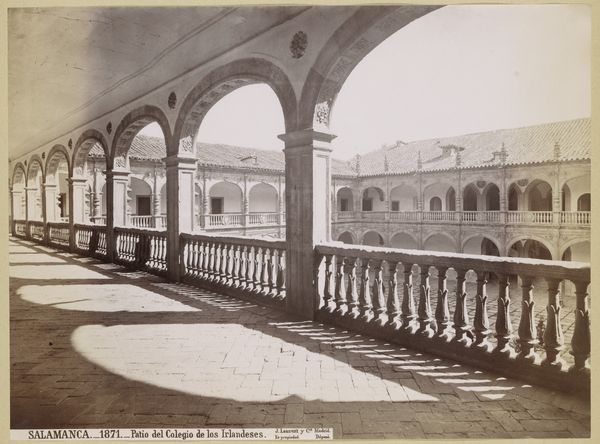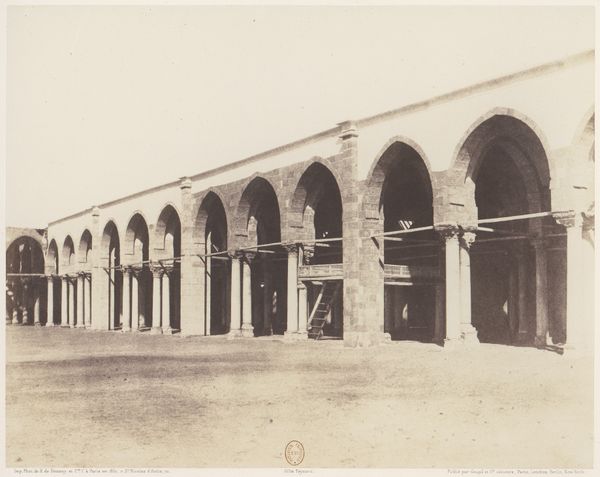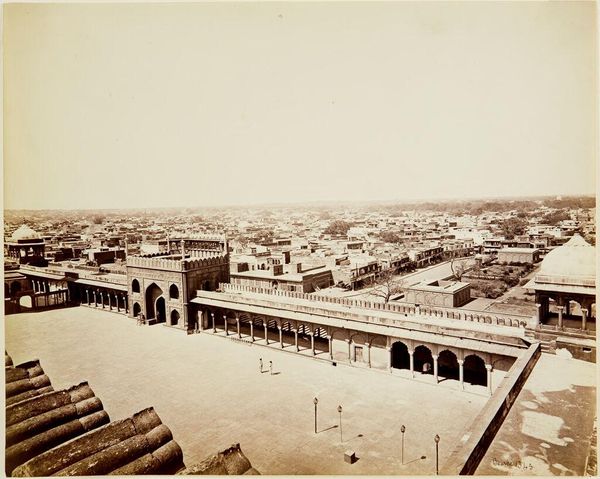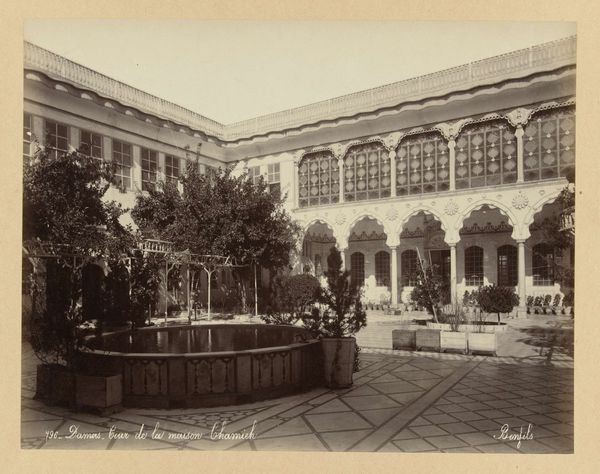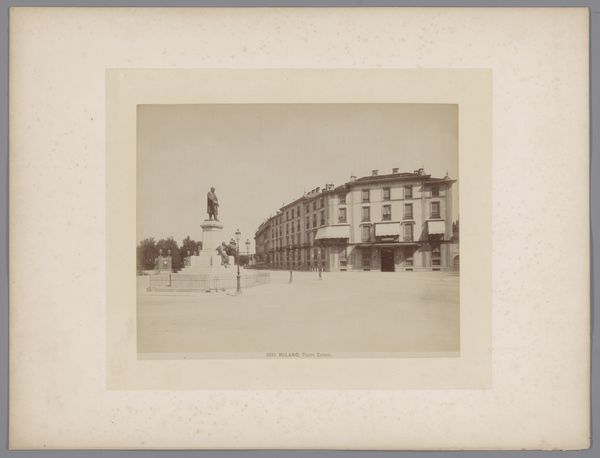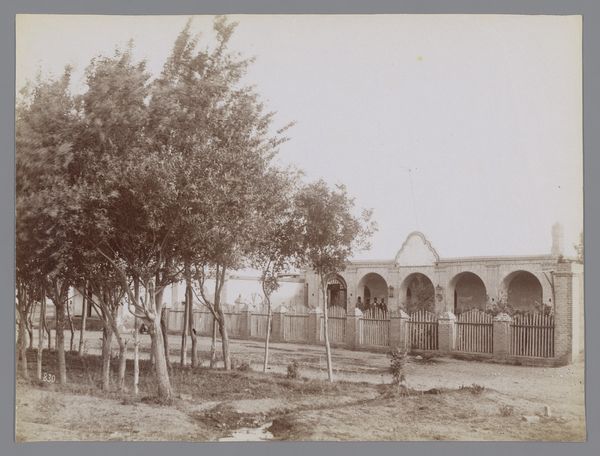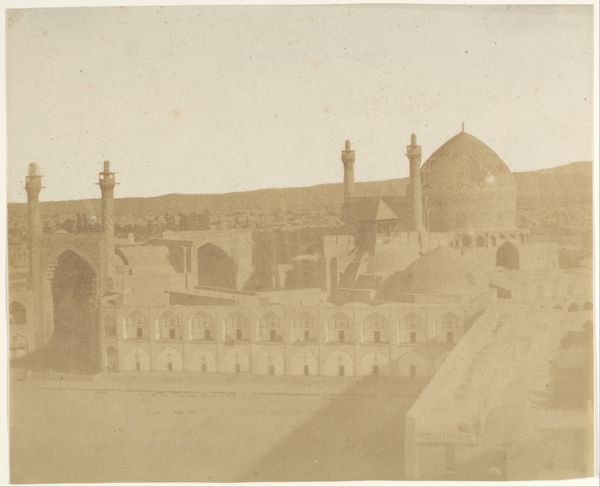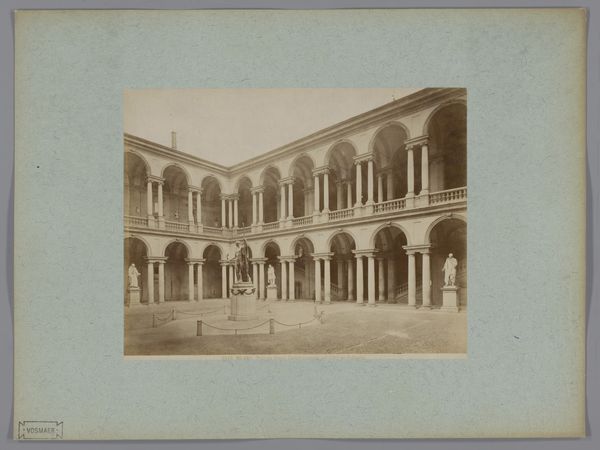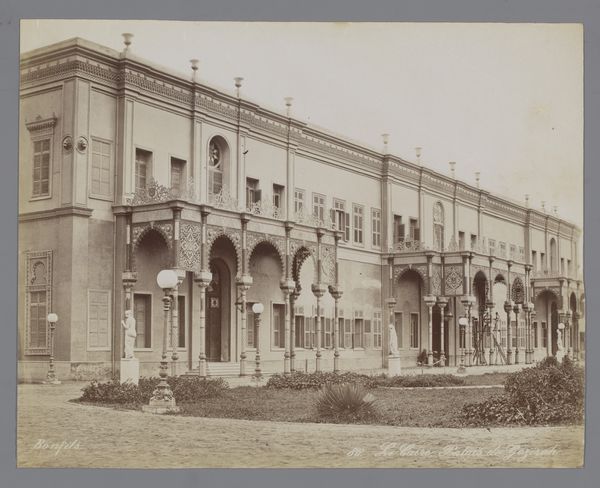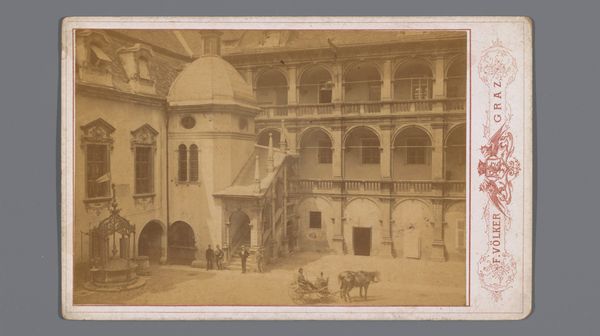
print, photography, site-specific, gelatin-silver-print
# print
#
landscape
#
photography
#
historical photography
#
site-specific
#
gelatin-silver-print
#
19th century
#
islamic-art
Dimensions: height 219 mm, width 276 mm, height 469 mm, width 558 mm
Copyright: Rijks Museum: Open Domain
Félix Bonfils made this albumen print of the courtyard of the Great Mosque of Damascus sometime in the late 19th century. The process involved coating paper with a layer of egg white and then using it to capture a photographic negative. The warm sepia tones we see are characteristic of this method, influenced by the chemical reactions and the paper's texture. Each print required careful handling and exposure, reflecting a blend of scientific precision and artisanal skill. Bonfils was among the first commercial photographers in the Middle East, and this image speaks to the rise of photography as both a documentary tool and a commodity. Consider the labor involved: from preparing the chemicals to the act of photographing and developing the image, each step depended on skilled hands. Photography like this was part of a larger industry, manufacturing views of distant lands for eager consumers. Appreciating the materiality of this print reminds us that seeing is also a form of making.
Comments
No comments
Be the first to comment and join the conversation on the ultimate creative platform.
